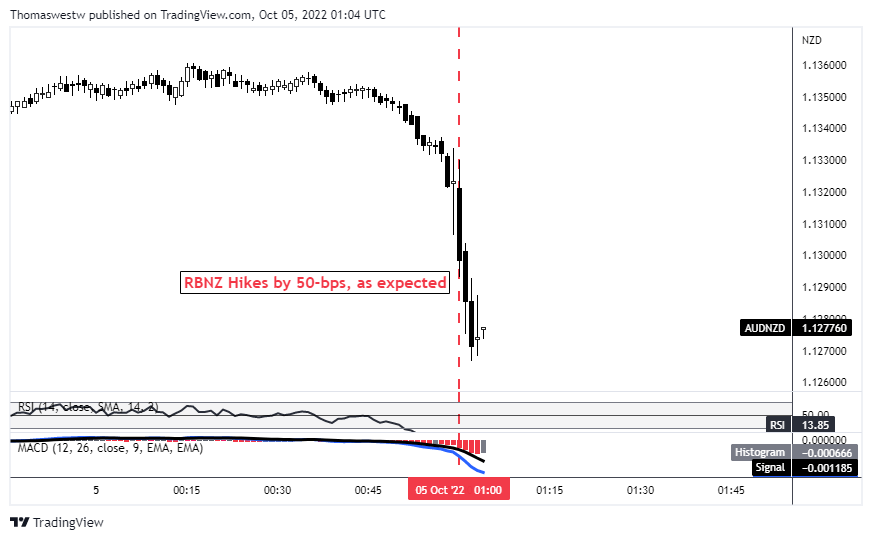Assessing The Economic Implications Of Trump's Trade Deal Strategy

Table of Contents
Donald Trump's presidency was marked by a significant shift in US trade policy, characterized by a departure from multilateral agreements and a focus on bilateral deals and the imposition of tariffs. This article assesses the multifaceted economic implications of this controversial strategy, examining its effects on various sectors and the overall US economy. We will delve into both the perceived benefits and the undeniable costs associated with this approach to international trade. The legacy of these "Trump trade deals" continues to shape global economic relations, making a thorough analysis crucial for understanding current market dynamics.
The Impact of Tariffs on US Industries and Consumers
Increased Prices for Consumers
The imposition of tariffs under Trump's trade policies directly impacted consumer goods, leading to increased prices and reduced purchasing power. Tariffs, essentially taxes on imported goods, increased the cost of everything from steel and aluminum to washing machines and furniture. This inflationary pressure squeezed household budgets, forcing consumers to either pay more for the same goods or reduce their spending. For example, tariffs on imported steel significantly increased the cost of automobiles and construction materials.
- Increased costs for imported goods: A direct result of tariffs, leading to higher prices at the checkout.
- Reduced consumer spending: As prices rose, consumers had less disposable income, impacting overall economic growth.
- Potential for inflationary pressures: Widespread tariff increases can contribute to a general increase in the price level across the economy.
Numerous studies analyzed data on consumer price increases linked to Trump's trade policies, generally concluding that tariffs contributed to a measurable rise in inflation, disproportionately affecting low-income households.
The Impact on Specific Industries (e.g., Agriculture, Manufacturing)
Trump's trade war, characterized by retaliatory tariffs from other countries, significantly impacted various US industries. While some sectors might have experienced short-term benefits from protectionist measures, many others suffered substantial losses.
- Impact on agricultural exports: Retaliatory tariffs imposed by China and other trading partners significantly reduced demand for US agricultural products, harming farmers and related businesses.
- Challenges for the manufacturing sector: Increased costs of imported materials, coupled with retaliatory tariffs on US exports, created significant challenges for the manufacturing sector, leading to job losses in some areas.
- Job creation and losses in specific industries: While some sectors might have seen temporary job gains due to increased domestic production, overall net job creation was likely negative, considering the losses in export-oriented industries.
The impact varied widely across industries. While some sectors, like steel, might have enjoyed temporary protection, others, particularly agriculture and manufacturing reliant on global supply chains, faced severe hardship.
The USMCA (formerly NAFTA) and its Economic Consequences
The USMCA, replacing NAFTA, represented a significant renegotiation of North American trade relations. While touted as an improvement over NAFTA, its overall economic consequences remain a subject of debate.
Comparison with NAFTA
The USMCA differs from NAFTA primarily in its stricter rules of origin for automobiles, aiming to increase North American content in manufactured goods. It also includes enhanced labor provisions and stronger intellectual property protections. These changes aimed to address concerns about job losses and unfair trade practices.
Impact on Trade Flows Between the US, Canada, and Mexico
Post-USMCA, trade flows between the US, Canada, and Mexico continued largely unchanged. The agreement aimed for a smoother, more predictable trade environment, reducing uncertainty, but the actual impact on the overall volume of trade has been relatively modest.
Assessment of Benefits and Drawbacks for Each Country
The economic benefits and drawbacks of the USMCA are debated. Some argue it enhanced labor standards and intellectual property protection, while others criticize its increased regulatory burdens. The impact varies across sectors and countries. For example, while the automotive industry might benefit from revised rules of origin, the agricultural sector might face continued challenges.
- Changes in trade barriers: The USMCA aims to simplify and harmonize trade procedures, yet some barriers remain.
- Investment flows: The impact on investment flows is mixed, with some sectors seeing increased investment and others experiencing a slowdown.
- Labor market effects: The USMCA aims to improve labor standards, but its actual impact on job creation or displacement requires further analysis.
- Dispute resolution mechanisms: The updated dispute resolution mechanisms are intended to provide a more effective means of resolving trade disagreements.
The Broader Global Impact of Trump's Trade Policies
Trump's trade policies had far-reaching global implications, impacting supply chains, global economic growth, and geopolitical alliances.
Disruption of Global Supply Chains
The trade war disrupted global supply chains, increasing uncertainty and costs for businesses worldwide. Companies had to re-evaluate sourcing strategies, leading to increased complexity and higher costs. This resulted in longer lead times and a greater susceptibility to disruptions.
Effects on Global Economic Growth
The trade tensions generated by Trump's policies contributed to slower global economic growth. Uncertainty surrounding trade policies discouraged investment and reduced international trade, negatively impacting economic activity worldwide.
Shifting Trade Alliances and Geopolitical Implications
Trump's focus on bilateral trade deals, coupled with his withdrawal from the Trans-Pacific Partnership, led to a shifting geopolitical landscape. This fostered increased protectionism and uncertainty regarding the future of multilateral trade agreements.
- Increased uncertainty in international markets: Trump's unpredictable trade actions created significant uncertainty for businesses engaged in international trade.
- Impact on global trade flows: Overall global trade growth slowed significantly during this period.
- Geopolitical realignments: Trump's trade policies strained relationships with key allies, potentially leading to new geopolitical alignments.
- The rise of protectionism: Trump's actions emboldened protectionist movements in other countries.
Conclusion
Trump's trade deal strategy had a complex and multifaceted impact on the US and global economies. While some sectors may have benefited temporarily from protectionist measures, the overall effect was likely negative, characterized by increased consumer prices, disruptions to global supply chains, and slower economic growth. The long-term consequences of these policies, including their lasting impact on trade relations and international cooperation, continue to unfold and warrant further research. The renegotiation of NAFTA into the USMCA, while intended to improve North American trade relations, hasn't fully mitigated the broader negative effects stemming from the overall trade strategy.
Continue your research into the lasting economic implications of Trump's trade deal strategy to gain a deeper understanding of the complexities of global trade. Further exploration of specific industry impacts, consumer behavior adjustments, and the evolving geopolitical landscape following this period of trade volatility are essential for a complete picture. Investigating the effectiveness of the USMCA in comparison to NAFTA, along with the long-term effects of tariffs and bilateral trade deals, can provide valuable insights into the nuances of international commerce.

Featured Posts
-
 Is The Australian Dollar Poised To Outperform The New Zealand Dollar
May 06, 2025
Is The Australian Dollar Poised To Outperform The New Zealand Dollar
May 06, 2025 -
 How To Get Sabrina Carpenter In Fortnite
May 06, 2025
How To Get Sabrina Carpenter In Fortnite
May 06, 2025 -
 The Met Gala 2025 Guest List Early Predictions And Confirmed Attendees
May 06, 2025
The Met Gala 2025 Guest List Early Predictions And Confirmed Attendees
May 06, 2025 -
 Stephen Kings 5 Biggest Celebrity Feuds
May 06, 2025
Stephen Kings 5 Biggest Celebrity Feuds
May 06, 2025 -
 Are We In A Recession The Stock Markets Unexpected Resilience
May 06, 2025
Are We In A Recession The Stock Markets Unexpected Resilience
May 06, 2025
